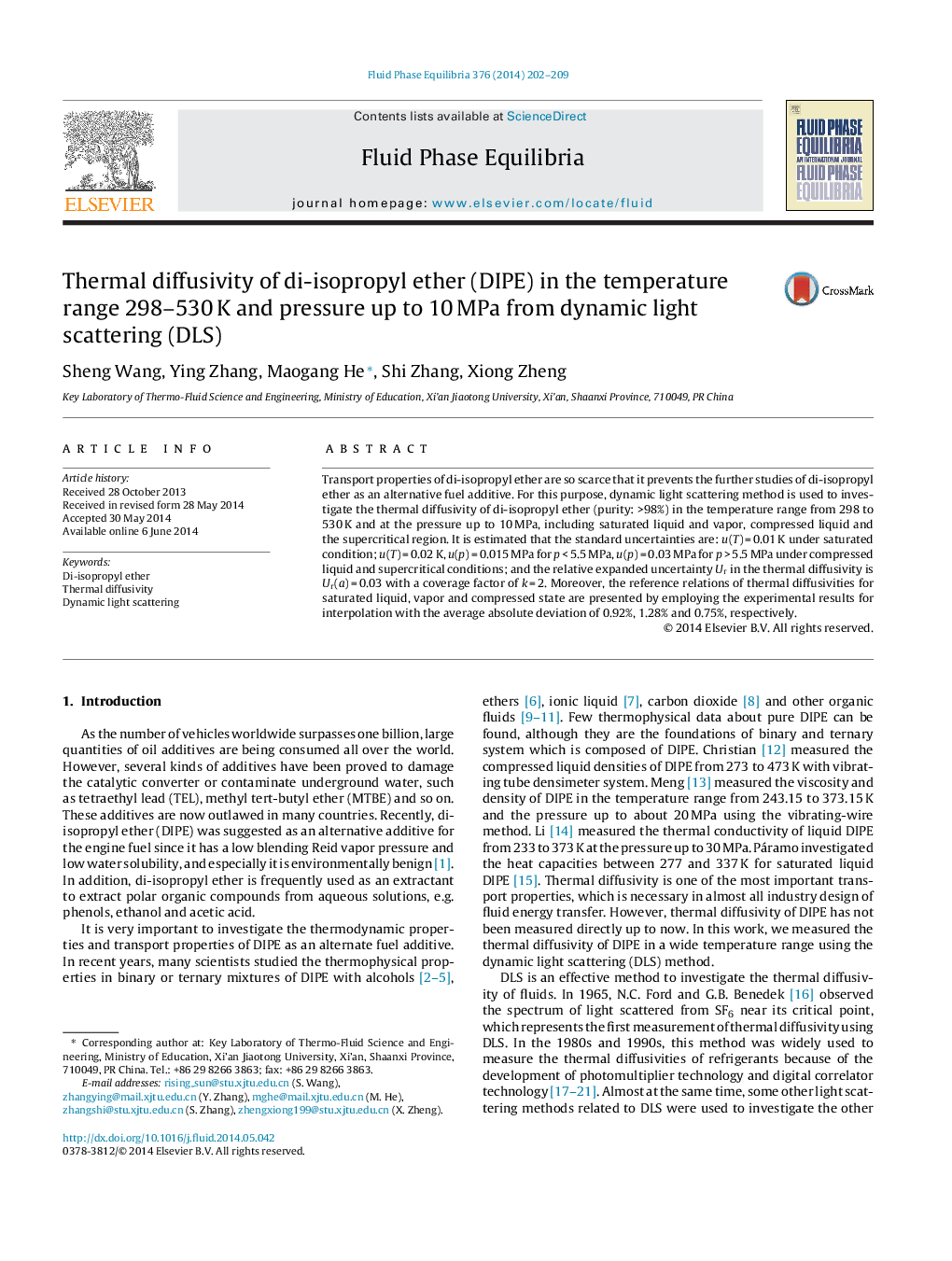| Article ID | Journal | Published Year | Pages | File Type |
|---|---|---|---|---|
| 202224 | Fluid Phase Equilibria | 2014 | 8 Pages |
•Thermal diffusivity of di-isopropyl ether was investigated by dynamic light scattering method in order to avoid the convection and radiation effect at high temperature.•Thermal diffusivity of di-isopropyl ether was measured in a wide temperature range, including saturated liquid, saturated vapor, compressed liquid and the supercritical region.•Two reference correlations were presented to calculate the thermal diffusivity of di-isopropyl ether at saturation state and compressed liquid state, respectively.
Transport properties of di-isopropyl ether are so scarce that it prevents the further studies of di-isopropyl ether as an alternative fuel additive. For this purpose, dynamic light scattering method is used to investigate the thermal diffusivity of di-isopropyl ether (purity: >98%) in the temperature range from 298 to 530 K and at the pressure up to 10 MPa, including saturated liquid and vapor, compressed liquid and the supercritical region. It is estimated that the standard uncertainties are: u(T) = 0.01 K under saturated condition; u(T) = 0.02 K, u(p) = 0.015 MPa for p < 5.5 MPa, u(p) = 0.03 MPa for p > 5.5 MPa under compressed liquid and supercritical conditions; and the relative expanded uncertainty Ur in the thermal diffusivity is Ur(a) = 0.03 with a coverage factor of k = 2. Moreover, the reference relations of thermal diffusivities for saturated liquid, vapor and compressed state are presented by employing the experimental results for interpolation with the average absolute deviation of 0.92%, 1.28% and 0.75%, respectively.
